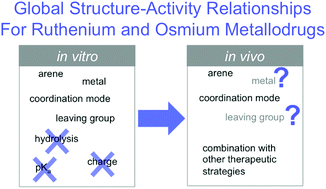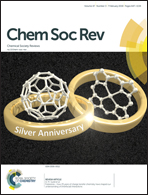Structure–activity relationships for ruthenium and osmium anticancer agents – towards clinical development
Abstract
Anticancer metallodrugs based on ruthenium and osmium are among the most investigated and advanced non-platinum metallodrugs. Inorganic drug discovery with these agents has undergone considerable advances over the past two decades and has currently two representatives in active clinical trials. As many ruthenium and osmium metallodrugs are prodrugs, a key question to be addressed is how the molecular reactivity of such metal-based therapeutics dictates the selectivity and the type of interaction with molecular targets. Within this frame, this review introduces the field by the examples of the most advanced ruthenium lead structures. Then, global structure–activity relationships are discussed for ruthenium and osmium metallodrugs with respect to in vitro antiproliferative/cytotoxic activity and in vivo tumor-inhibiting properties, as well as pharmacokinetics. Determining and validating global mechanisms of action and molecular targets are still major current challenges. Moreover, significant efforts must be invested in screening in vivo tumor models that mimic human pathophysiology to increase the predictability for successful preclinical and clinical development of ruthenium and osmium metallodrugs.



 Please wait while we load your content...
Please wait while we load your content...